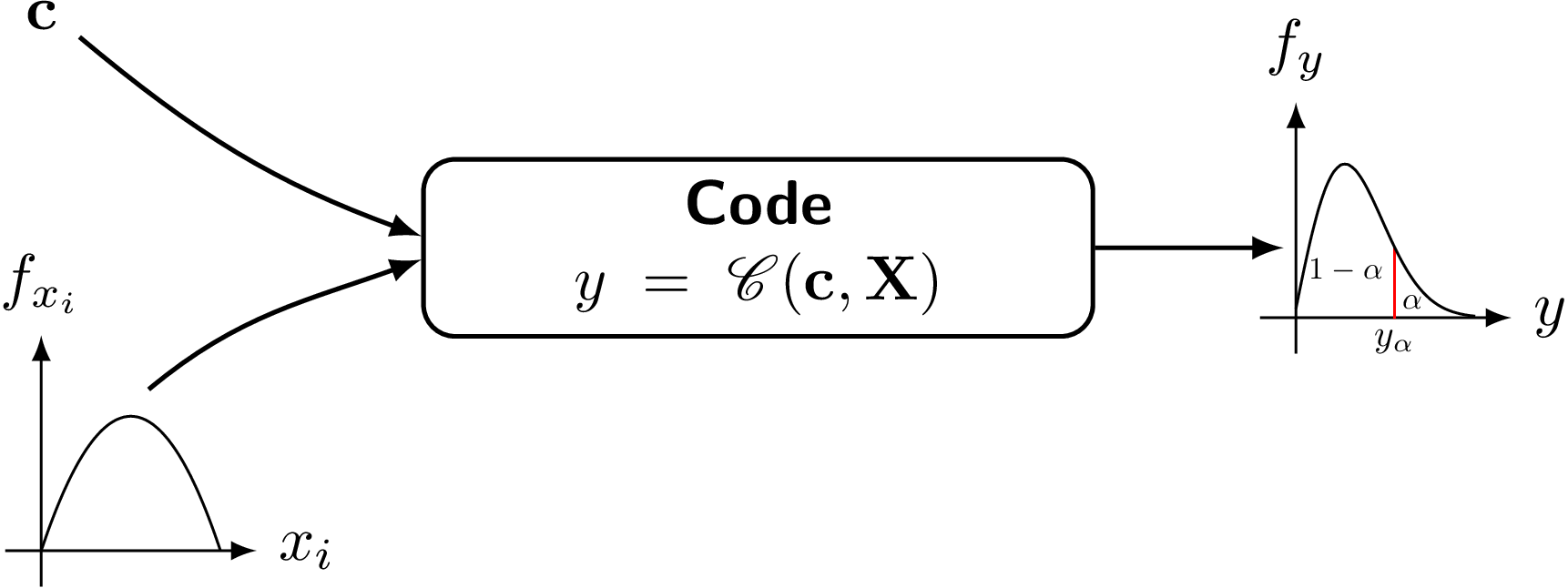Documentation
/ Methodological guide
: 
Table of Contents
The Uranie-sampling module is used to produce design-of-experiments knowing the expected behaviour of the input variables for the problem under consideration. The framework of our approach can be illustrated in the following schematic view:
We will denote as
 the studied computational code which, generally, has two types of inputs:
the studied computational code which, generally, has two types of inputs:
The constant parameters which are gathered in the vector
 . They
represent constants.
. They
represent constants.
The uncertain parameters which are gathered in the vector

It shall be noticed that these parameters are supposed to be uncertain either because of a lack of knowledge on their actual value or because of their intrinsic random nature.
The result of the code
 for a given set of parameters
for a given set of parameters  gives the vector
gives the vector  which contains all the output variables of the analysis.
which contains all the output variables of the analysis.
Most of the time, the code  implies solving equations with partial derivatives in more or less complex configurations. The most
well-known method to handle this is to generate a sample, as representative as possible of the behaviour of all input
variables, in order to fully cover the input parameter phase space. This is the definition of a design-of-experiments which can be
generated in many different ways (depending on the analysis purpose, the laws under consideration...). The rest of this
section mainly introduces concepts used throughout this documentation; more details can be found either in the user
manual or in references.
implies solving equations with partial derivatives in more or less complex configurations. The most
well-known method to handle this is to generate a sample, as representative as possible of the behaviour of all input
variables, in order to fully cover the input parameter phase space. This is the definition of a design-of-experiments which can be
generated in many different ways (depending on the analysis purpose, the laws under consideration...). The rest of this
section mainly introduces concepts used throughout this documentation; more details can be found either in the user
manual or in references.
Different methods exist to obtain a design-of-experiments from uncertain parameters which can be classified into two categories:
stochastic methods (see Section III.2). These methods consist in using a random number generator to produce new samples. This is also called Monte-Carlo.
deterministic methods (see Section III.3). Two distinct calls with the same parameters will always give the same point in a design-of-experiments. Some of these methods (those discussed below) are sequences which are sometimes called quasi-Monte Carlo (qMC).






